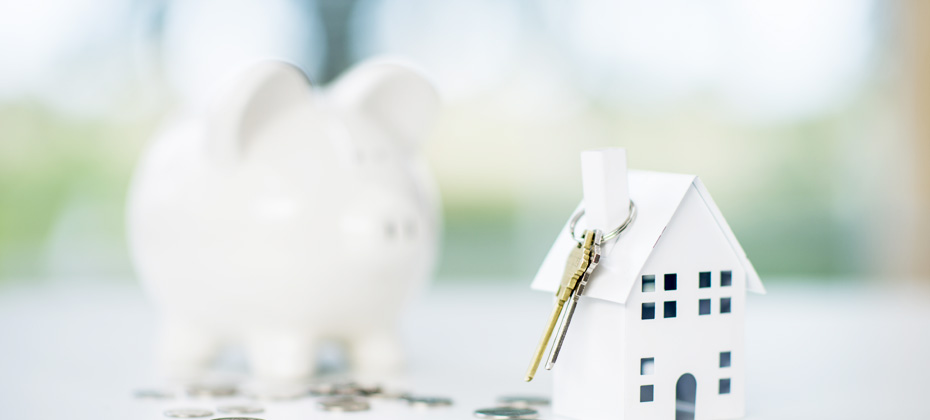Tag: debt recovery

Effective collection strategies are critical for the financial health of credit unions. Unlike traditional banks, credit unions often emphasize member relationships and community values, making the collection process more tactful. Crafting a strategy that balances the need for financial stability with member-centric values is essential. Here’s a step-by-step guide on how to create an effective credit union collection strategy. 1. Understand your members The foundation of an effective credit union collection strategy is understanding your members. Credit unions often serve specific communities or groups, and members may face unique financial challenges. By analyzing member demographics, financial behavior, and common reasons for delinquency, you can tailor your approach to be more vigilant and effective. Segment members: Group members based on factors like loan type, payment history, and financial behavior. This allows for targeted communications and outreach strategies. Member communication preferences: Determine how your members prefer to be contacted—whether by phone, email, or in person. This can increase engagement and responsiveness. 2. Prioritize compliance Compliance with regulations is non-negotiable in the collections process. Ensure that your strategy adheres to all relevant laws and guidelines. Fair Debt Collection Practices Act (FDCPA): Ensure that your team is fully trained on the FDCPA and that your practices comply with its requirements. State and local regulations: Be aware of any state or local regulations that may impact your collections process. This could include restrictions on contact methods or times. Internal audits: Regularly conduct internal audits to ensure compliance and identify any areas of risk. 3. Leverage technology for efficiency Technology can streamline the collection process, making it more efficient and a better member experience. Automated reminders: Use automated systems to send reminders before and after payment due dates. This reduces the likelihood of missed payments due to forgetfulness. Data analytics: Use data analytics to identify trends in member behavior, establish a collections prioritization strategy, and predict potential delinquencies. This allows your team to be proactive rather than reactive. Digital communication channels: Implement digital communication options, such as text messages or chatbots to make it easier for members to interact with the credit union. 4. Establish clear communication protocols Early and frequent communication is key to preventing delinquency and managing it when it occurs. Create clear protocols for member communication that prioritize empathy and treatment plans over demands. Early intervention: Reach out to members as soon as they miss a payment. Early intervention can prevent minor issues from escalating. Consistent communication: Ensure that your communication is consistent across all channels. Whether a member receives a call, an email, or a letter, the message should be clear and aligned with the credit union’s values. Human understanding: Train your collections team to use a compassionate tone. Members are more likely to respond positively when they feel understood and respected. 5. Offer flexible payment solutions Flexibility is crucial when working with members who are struggling financially. Offering a range of payment solutions can help members stay on track and reduce the likelihood of default. Customized treatment plans: Offer customizable payment plans that fit the member’s financial situation. This could include lower payments over a longer term or temporary payment deferrals. Loan modifications: In some cases, modifying the terms of the loan—such as extending the repayment period or lowering the interest rate—may be necessary to help the member succeed. Debt consolidation options: If a member has multiple loans, consider offering debt consolidation to simplify their payments and reduce their overall financial burden. 6. Train your collection team Your collection team is the frontline of your strategy. Providing them with the right training and tools is essential for success. Ongoing training: Regularly update your team on the latest regulations, best practices, and communication techniques. This keeps them informed and prepared to handle various situations. Better decision making: Empower your team to make decisions that align with the credit union’s values. This could include offering payment extensions or waiving late fees in certain situations. Regular support: Working in collections can be complex. Provide resources and support to help your team manage stress and maintain a positive attitude. 7. Monitor and adjust your strategy A successful credit union collection strategy is dynamic. Regularly monitor its performance and adjust as needed. Key performance indicators (KPIs): Track KPIs such as delinquency rates, recovery rates, roll-rates and member satisfaction to gauge the effectiveness of your strategy. Member feedback: Survey members who have gone through the collections process. Their insights can help you identify areas for improvement. Continuous improvement: Use data and feedback to continuously refine your strategy. What worked last year may not be as effective today, so staying adaptable is key. Creating an effective credit union collections strategy requires a balance of empathy, effective communication, and compliance. By understanding your members, communicating clearly, offering flexible solutions, leveraging technology, and continuously improving your approach, you can develop a strategy that not only reduces delinquency but also strengthens member relationships. In today’s fiercely competitive landscape, where efficiency and efficacy stand paramount, working with the right partner equipped with innovative credit union solutions can dramatically transform your outcomes. Choosing us for your debt collection needs signifies an investment in premier analytics, advanced debt recovery tools, and unmatched support. Learn more Watch credit union collection chat This article includes content created by an AI language model and is intended to provide general information.

Automation, artificial intelligence and machine learning are at the forefront of the continued digital transformation within the world of collections. And organizations from across industries — including healthcare, financial services and the public sector — are learning how automated debt collection can improve their workflows and strategies. When implemented well, automation can ease pressure from call center agents, which can be especially important when there's a tight labor market and retention is top of mind for every employer. Automated systems can also help improve recovery rates while minimizing the risk of human error and the corresponding liability. These same systems can increase long-term customer satisfaction and lifetime value. Deeper insights into consumers' financial situations and preferences allow you to avoid wasting resources and making contact when consumers are truly unable to pay. Instead, monitoring and following up with their preferred contact method can be a more successful approach — and a better experience for consumers. Three tips for automated debt collection Automation and artificial intelligence (AI) aren't new to collections. You may have heard about or tried automated dialing systems, chatbots, text message services and virtual negotiators. But the following three points can be important to consider as the technology and compliance landscapes change. 1. Good automation depends on good data Whether you're using static automated systems to improve efficiencies or using a machine learning model that will adapt over time, the data you feed into the system needs to be accurate. The data can be internal, from call center agents and your customers, and external sources can help verify and expand on what you know. With your internal systems, consider how you can automate processes to limit human errors. For example, you may be able to auto-fill contact information for customers and agents — saving them time and avoiding typos that can cause issues later. External data sources can be helpful in several ways. You can use third-party data as a complementary resource to help determine the best address, phone number or email address to increase right-party contact (RPC) rates. External sources can also validate your internal data and automatically highlight errors or potentially outdated information, which can be important for maintaining compliance. Robust and frequently updated datasets can make your collection efforts more efficient and effective. An automated system could be notified when a debtor resurfaces or gets a new job, triggering new reminders or requests for payment. And if you're using the right tools, you can automatically route the account to internal or external servicing and prioritize accounts based on the consumer's propensity to pay or the expected recovery amount. LEARN MORE: Advanced analytics involves using sophisticated techniques and tools to analyze complex datasets and extract valuable insights. Learn about the benefits of advanced analytics in delinquent debt collection. 2. Expand consumers' communication options and choices Your automated systems can suggest when and who to contact, but you'll also want them to recommend the best way to contact consumers. An omnichannel strategy and digital-first approach is increasingly the preferred method by consumers, who have become more accustomed to online communications and services. In fact, companies with omnichannel customer engagement strategies retain on average 89% of their customers compared to 33% of retention rates for companies with weak omnichannel strategies. Organizations can benefit by using alternative communication methods, such as push notifications, as part of an AI-driven automated process. These can be unobtrusive reminders that gently nudge customers without bothering them, and send them to self-cure portals. Many consumers may need to review the payment options before committing — perhaps they need to check their account balances or ask friends or family for help. Self-service options through an app or web portal can give them choices, such as a single payment or payment plan, without having to involve a live agent. 3. Maintaining compliance must be a priority Organizations need to be ready to adjust to a rapidly changing compliance environment. Over the last few years, organizations have also had to react to changes that can impact Telephone Consumer Protection Act (TCPA) compliance. The automated systems you use should be nimble enough to comply with required changes, and they should be able to support your overall operation's compliance. In particular, you may want to focus on how automated systems collect, verify, safeguard and send consumers' personal information. Why partner with Experian? Whether you're looking to explore or expand your use of automated systems in your collection efforts, you want to make sure you're taking the right approach. Experian helps clients balance effective collections and a great customer experience within their given constraints, including limited budgets and regulatory compliance. The Experian Ascend Intelligence Platform and award-winning PowerCurve® Collections solutions are also making AI-driven automated systems accessible to more lenders and collectors than ever before. Taking a closer look at Experian's offerings, we can focus on three particular areas: Industry-leading data sources Experian's data sources go well beyond the consumer credit database, which has information on over 245 million consumers. Clients can also benefit from alternative financial services data, rental payment data, modeled income estimates, information on collateral and skip tracing data. And real-time access to information from over 5,000 local exchange carriers, which can help you validate phone ownership and phone type. Tools for maximizing recovery rates Experian helps clients turn data into insights and decisions to determine the best next step. Some of Experian's offerings include: Collection AdvantageSM: A one-stop shop for comprehensive and efficient debt collection, Collection AdvantageSM allows you to segment, prioritize and make contact on collections accounts by leveraging speciality collection scoring models. PriorityScore for CollectionsSM: Over 60 industry-specific debt recovery scores that can help you prioritize accounts based on the likelihood to pay or expected recovery amount. RecoveryScore 2.0: Helps you prioritize charged-off accounts based on collectability. TrueTrace™ and TrueTrace Live™: Find consumers based on real-time contact information. We've seen a 10 percent lift in RPC with clients who use Experian's locating tools, TrueTrace or TrueTrace Live. Collection Triggers℠: Sometimes, waiting is the best option. And with an account monitoring tool like Collection Triggers℠, you'll automatically get notified when it makes sense to reach out. RPC contact scores: Tools like Phone Number ID™ and Contact Monitor™ can track phone numbers, ownership and line type to determine how to contact consumers. Real-time data can also increase your RPC rates while limiting your risk. LEARN MORE: See how Collection Triggers can help you establish a more profitable debt collection strategy to increase recovery rates. You can use these, and other, tools to prioritize collection efforts. Experian clients also use different types of scores that aren't always associated with collections to segment and prioritize their collection efforts, including bankruptcy and traditional credit-based scores. Custom models based on internal and external scores can also be beneficial, which Experian can help you build, improve and house. Prioritize collections activities with confidence Collections optimization comes down to making the right contact at the right time via the right channel. Equally important is making sure you're not running afoul of regulations by making the wrong contact. Experian's data standards and hygiene measures can help you: Identify consumers who require special handling Validate email addresses and identify work email addresses Get notified when a line type or phone ownership changes Append new contact information to a consumer's file Know when to reach out to consumers to update contact information and permissions Recommend the best way to reach consumers Automated tools can make these efforts easier and more accurate, leading to a better consumer experience that increases the customer's lifetime value and maximizes your recovery efforts. Learn more

Breaking down, rethinking, and optimizing your debt collection recovery process can be complicated — but you risk falling behind if you don't invest in your business. From managing live agents to unlocking the latest machine-learning models, there are different options and routes you can take to improve recovery rates. Debt collection challenges in 2023 Collection agencies have embraced digitization. The benefits are numerous — cost savings, streamlined processes, and improved compliance, to name a few. However, digital tools aren't cure-alls, and they can even create new challenges if you're not careful. Maintaining accurate consumer data: Quickly reaching consumers can be difficult during times of economic uncertainty. Increased access to data can help you overcome this challenge, but only if you can manage and understand the information. If you simply turn on the metaphorical data streams, you could find yourself drowning in duplicate and erroneous entries.Keeping up with rising delinquencies: Delinquency rates steadily rose throughout 2022.1 Although rates may level out for some types of accounts in 2023, collection agencies need a plan for dealing with the potential increased volume. At the same time, continued low unemployment rates could make it difficult to hire and retain agents. Managing a tight budget: Recession worries also have companies rethinking expenses, which can impact your ability to increase head count and invest in technology. Finding effective trade-offs is going to be important for debt collection process optimization.Staying compliant: We've seen some major changes over the last few years, but there's no time to rest — debt collectors always need to be aware of new state and federal regulations. Digitization might make compliance more difficult if you're now managing an increasing amount of personal information or using text messages (or other omni-channels) to contact consumers. WATCH:Keeping pace with collections compliance changes Five ways to enhance your debt collection process Here are five ways that debt collectors can overcome today's challenges and take advantage of new opportunities. 1. Leverage clean data Continuously updating and checking the accuracy of your data can help increase right-party contact rates. But don't rely on your internal data and basic internet searches or public records. Leading data and skip-tracing services can give you access to additional data from credit bureaus, alternative financial services, collateral records, business listings and other helpful sources. Some skip-tracing tools can continuously verify and update contact information. They can also rank contact records, such as phone numbers, to save your agent's time. And identify consumers in a protected status such as bankrupt, deceased, and active military) and require special handling to help you stay compliant. 2. Implement advanced analytics and automation High-quality data can also be the foundation for a data-driven approach to collections. Use collections-specific models: Although credit risk scores can be a piece of the debt collection puzzle, debt collection recovery models are often a better fit. You may be able to use different models to score accounts based on exposure, risk, willingness to pay or behavioral factors. Segment accounts: Increased insights and models also allow you to more precisely segment accounts, which can help you handle larger volumes with fewer resources. For instance, you can more accurately determine which accounts require an agent's personal touch, which can move forward with an automated experience and which should go to the back of your queue. The data-driven approach also allows you to increasingly automate your collections — which can help you deal with rising delinquency rates in the face of a tight labor market and budget constraints. 3. Know when and how to make contact Segmentation and advanced analytics can tell you who and when to contact, but you also have to be mindful of how you reach out. Letters, calls, emails and texts can all be effective in the right circumstances, but no single option will always be best. For example, a text could be ideal when contacting Gen Z, but a call might work best for Baby Boomers. That's neither novel nor surprising, but it is important to stay up to date with the latest trends and preferences. Ideally, you reach people on their preferred channel at an appropriate time. You may also need to continually test, monitor and refine your process, especially if you want to increase automation. READ:Digital Debt Collection Future white paper 4. Offer financially appropriate treatments In addition to picking the right communication channel, consider the payment options you offer consumers. Various payment plans, settlements and policies can directly affect your recovery rates — and what performed best in previous years might not make sense anymore. Chatbots and virtual negotiators can also help improve recovery rates without straining your agents' time. And for accounts that will likely self-cure, automated texts or emails with links to self-service portals could be an ideal solution. Expanding payment methods, such as accepting payments from digital wallets when you're sending a text message, could also make sense. However, you want to be sure you're not wasting time or money by contacting consumers who don't have the means to make a payment. Instead, set those accounts aside for now, but monitor them for changes that could indicate their financial situation has changed — such as a new credit line. Then, try to offer a solution that will likely fit the consumer's circumstances. 5. Invest in your live agents Modern debt management and collection systems focus on digitization and automation, and these can improve recovery rates. But don't forget about your front-line agents. There will always be times when a personal touch gets you further than an automated message. Continued training and ongoing recognition can be important for retaining top performers, maintaining compliance and increasing agents' effectiveness. Partner for success Implementing an efficient and effective collections strategy can require a lot of work, but you don't have to go at it alone. Experian offers various debt collection solutions that can help optimize processes and free up your organization's resources and agents' time. Tap into our industry-leading data sources — including traditional credit data, alternative financial data and over 5,000 local phone exchange carriers — to find, update and verify account information. Available on the cloud or with secure file transfers, the TrueTrace™ and TrueTrace Live™ tools have led to a 10 percent lift in right-party contact rates compared to competitors. When it comes to optimizing outreach, you can prioritize accounts with over 60 industry-specific debt recovery scores via PriorityScore for CollectionsSM. Or work with Experian to create custom models for your organization. For an end-to-end decisioning solution, our AI-driven PowerCurve® Collections solution draws from internal and external data to determine the proper customer contact frequency, channel and treatment options, including self-service portals. Create your own strategies and workflows and manage the entire process with a single dashboard, cloud-based access and integrated reports. Learn more about Experian's debt collection process solutions 1Experian. (February 2023). Credit Scores Steady as Consumer Debt Balances Rise in 2022

Consumer behavior and payment trends are constantly evolving, particularly in a rapidly changing economic environment. Faced with changing demands, including an accelerated shift to digital communications, and new regulatory rules, debt collectors must adapt to advance in the new collections landscape. According to Experian research, as of August, the U.S. unemployment rate was at 8.4%, with numerous states still having employment declines over 10%. These triggers, along with other recent statistics, signal a greater likelihood of consumers falling delinquent on loans and credit card payments. The issue for debt collectors? Many debt collection departments and agencies are not equipped to properly handle the uptick in collection volumes. By refining your process and capabilities to meet today’s demands, you can increase the success rate of your debt collection efforts. Join Denise McKendall, Experian’s Director of Collection Solutions, and Craig Wilson, Senior Director of Decision Analytics, during our live webinar, "Adapting to the New Collections Landscape," on October 21 at 10:00 a.m. PT. Our expert speakers will provide a view of the current collections environment and share insights on how to best adapt. The agenda includes: Meeting today’s collections challenges A Look at the state of the market Devising strategies and solving collections problems across the debt lifecycle Register now

Profitability analysis is one of the most powerful analytics tools in business and strategy development. Yet it’s underrated, deemed too complicated and often ignored. A chief lending officer may state that the goal of strategy development is to increase approvals or to reduce losses. Each one of these goals has an impact generally inversely on each other. That impact may be consequential, and evaluating the effects requires deeper thought and discipline. I propose that the benefits of a profitability analysis in strategy development are worth the additional effort, time and cost. Profitability analysis provides a disciplined framework for making business decisions. For financial companies, a simple profit and loss (P&L) statement will identify interest income, subtract losses and arrive at a risk-adjusted yield. A more robust P&L statement will include interest expense, loss reserves, recovery, fees and other income, operating expenses, other cost per account, and net income. Whether simplified or fully loaded, a P&L analysis used in strategy development must provide a clear and informative representation of key performance metrics and risks. The most important benefit of a profitability analysis is its inherent ability to quantify the trade-offs between risk and rewards. In the P&L terminology, we mean the trade-off between expenses and revenue or losses and interest income. Understanding trade-offs allows companies to make informed decisions and explore serious alternatives. The net income is a concise and elegant metric that captures the impact of various and sometimes competing business objectives. Consider different divisions within a financial organization. Each division has its own specific and measurable objective. Marketing’s goal is to increase loan approvals while Risk is tasked with managing losses. Operations looks to improve efficiencies while IT aims to provide stable, reliable and accurate systems infrastructure. Legal and Compliance ensure regulatory compliance across the entire organization. Each division working to achieve its objectives creates externalities — each division’s actions may not fully incorporate costs imposed on other divisions. For example, targeting highly responsive consumers for a loan product achieves higher loan approvals and may in turn lead to higher credit risk losses. A P&L analysis imposes the discipline for each division to internalize costs and lead to a favorable and efficient outcome for the organization. The challenge with profitability analysis in strategy development is how to develop a good P&L statement. We look to historical data to define assumptions and calibrate inputs to the P&L. There will be uncertainty and concerns regarding the reliability and quality of such data. Organizations don’t regularly conduct test and control experiments or champion and challenger strategies that provide actual performance information on specific areas of studies. Though imperfect, historical data provides a starting foundation for profitability analysis. We augment historical data with predictive credit attributes, industry experience and understanding consumer behavior and incentives. For example, to estimate interest income we may utilize estimated interest rates combined with balance propensity behavior, such as a balance revolver or transactor. To estimate losses on declined population that may be considered for approval, we infer on-us performance using off-us performance with other lenders. Defining assumptions is tedious, hard work and full of uncertainty. This exercise once again imposes the discipline required of organizations to know in detail the characteristics of their products and businesses that make them relevant to consumers. We generate P&L simulations using a set of assumptions, acknowledge the data limitations and evaluate recommendations. A profitability analysis is useful in both times of economic expansion and contraction. A P&L analysis is valuable when evaluating strategies across the customer life cycle. Remember, we live in a world of trade-offs and choices are inevitable. In the prospecting and acquisition life cycle, a P&L analysis provides insights on approval expansion and the consequences of higher credit losses. Alternatively, tighter lending criteria will have a direct impact on balance growth and interest income with lower losses. In account management, a P&L analysis provides estimates on expanded account authorization limits and the effect on activation and usage. In collections, a P&L analysis provides valuation on recoveries and operational costs. These various assessments are quantified in the P&L and allows the organization to identify other mechanisms such as marketing campaigns, customer services or technology investments in support of the organization’s goals and mission. Organizations face a full spectrum of opportunities and risks. We propose a profitability analysis to evaluate business trade-offs, navigate the marketplace, and continue to provide relevant financial products and services to consumers and businesses. Learn more

New challenges created by the COVID-19 pandemic have made it imperative for utility providers to adapt strategies and processes that preserve positive customer relationships while continuing to collect delinquent balances during an unpredictable and unprecedented time. As part of our ongoing Q&A perspective series, Beth Bayer, Experian’s Vice President of Energy Sales, and Danielle Grigaliunas, Product Manager of Collection Solutions, discuss the changing collections landscape and how the utility industry can best adapt. Check out what they had to say: Q: How are the COVID-19 crisis and today’s economic environment impacting consumer behavior? Particularly as it relates to delinquencies and payments? BB: Typically, when we experience recessions, delinquency goes up. In this recession, delinquency is declining. Stimulus money and increased unemployment benefits, coupled with stay at home orders, appear to be leading to more dollars available for consumers to repay obligations and debts. Another factor is related to special accommodations, forbearances, and payment holidays or extensions, that provide consumers with flexible options in making their regularly scheduled payments. Once an accommodation is granted, the lender or bank puts a code on the account when it’s reported to the bureaus and the account does not continue to age. Q: As a result of the pandemic, many regulatory bodies are recommending or imposing changes to involuntary disconnect policies. How can utility providers effectively collect, even if they can’t disconnect? BB: The public utility commissions in many areas have suspended disconnects due to non-payment, further increasing balances, delinquency and delaying final bill generation. Without the fear of being disconnected for non-payment in some regions of the country, customers are not paying delinquent utility bills. Utility providers should continue to provide payment reminders and delinquency notices and offer payment plans in exchange for partial payments to continue to engage customers. Identifying which customers can pay and are actively paying other creditors and institutions helps prioritize proactive outreach. Q: For utility providers who offer in-house collection services, what strategies and credit data do you find most valuable? DG: Current and accurate data is key when looking to provide stronger and more strategic collections. This data is built into efficient scoring models to articulate which debts are most collectible and how much money will be recovered from each consumer. Without the overlay of credit data, it’s harder for utility providers to predict how consumers prioritize utility debt during times of economic stress. By better understanding the current state of the consumer, utility providers can focus on consumers who are most likely to pay. Investing in monitoring solutions allows utility providers to receive notifications when their consumers are beginning to cure and pay off other obligations and take a more proactive approach. Q: What are the best methods for utility providers to reach collection consumers? What do they need to know as they begin to utilize omnichannel communications? DG: Regular data hygiene checks and skipping are the first line of defense in collections. Confirming contact information is correct and up to date throughout the entire consumer lifecycle helps to establish a strong relationship. Those who are successful in collections invest in omnichannel messaging and self-service payment options, so consumers have a choice on how they’d like to settle their obligations. Q: What current collection trends/challenges are we seeing within the utility space? BB: Utility providers do not traditionally report active customer payments and delinquencies to the credit bureaus. Anecdotally, our utility partners tell us that delinquencies are up and balances are growing. Many customers know that they cannot currently be disconnected if they fall behind on their utility payments and are using this opportunity to prioritize other debts. We also know that some utilities have reduced collection activities during the pandemic due to office closures and have cut back on communication efforts. Additionally, we’re hearing from some of our utility partners that collections and recoveries of final billed or charged-off accounts are increasing, despite many agencies closing and limited to no collection activities occurring. We assume this is because these balances are typically reported to the credit reporting agencies, triggering a payment and interest in clearing that balance first. Constant communication, flexibility, and empathizing with your customers by offering payment plans and accommodations will lead to an increase in dollars collected. DG: There’s been a large misunderstanding that because utility providers can’t disconnect, they can’t attempt to collect. The success of collections has been seen within first parties, as they are still maintaining strong relationships by reaching out at optical times and remaining top-of-mind with consumers. The utility industry needs to take a proactive approach to ensure they are focusing on the right consumers through the right channels at the right time. Credit data that matches the consumer’s credit health (i.e. credit usage and payments) is needed insight when trying to understand a consumer’s overall financial standing. For more insight on how to enhance your collection processes and capabilities, watch our Experian Symposium Series event on-demand. Watch now About our Experts: Beth Bayer, Vice President of Sales, Experian Energy, North America Beth leads the Energy Vertical at Experian, supporting regulated, deregulated and alternative energy companies throughout the United States. She strives to bring innovative solutions to her clients by leveraging technology, data and advanced analytics across the customer lifecycle, from credit risk and identity verification through collections. Danielle Grigaliunas, Product Manager of Collections Solutions, Experian Consumer Information Services, North America Danielle has dedicated her career to the collections space and has spent the last five years with Experian, enhancing and developing collections solutions for various industries and debt stages. Danielle’s focus is ensuring that clients have efficient, compliant and innovative collection and contact strategies.

Rays of hope are beginning to shine in the economy that suggest the U.S. may have moved beyond the most acute phase of the economic crisis. The housing sector, in particular, looks poised to regain momentum and perhaps lead the path towards stabilization in the second half of 2020. A “V-Shaped” rebound in mortgage applications Despite record levels of unemployment and widespread economic uncertainty, homebuyers have returned to the market with conviction. After shelter-in-place restrictions curtailed open-house visits and crimped buyer demand in early April, applications to purchase a home have risen for six consecutive weeks, according to the Mortgage Bankers Association. The latest data for the week of May 22nd, indicate that purchase applications were 9% higher than during the same period in 2019. If this trend continues, it will show that significant pent-up demand exists in the housing market that may be able to offset some of the lost spring buying season. April new home sales far exceed expectations After declining by 13.7% in March, new home sales rose a modest 0.6% in April. While this was only a slight gain, it was considerably above economists’ projections of a fall of 20% and may mark the turning point in the downtrend. Since the recording of new home sales data occurs when the purchase contract is signed or a deposit is accepted – and is typically for a house that hasn’t been built yet or is currently under construction – it provides a gauge of how buyers feel about their future economic prospects. Building a home also requires hiring new construction workers, buying building supplies, and supporting a host of ancillary industries, thus making it an indicator of further economic activity. Some of the increase in demand for new homes may have been driven by coronavirus quirks. The number of existing homes on the market is at record lows and many people may have been reluctant to put their home up for sale and have buyers tour as health concerns remain. Buyers, as well, may have preferred to steer clear of occupied homes or were unable to make in-person visits due to shelter-in-place restrictions. This lack of options for home buyers, coupled with record-low mortgage rates, likely drove sales of new homes higher. However, for the same reasons why new home sales rose, pending sales for existing homes fell sharply. In April, the National Association of Realtors reported that sales declined by 21.8%, which is the largest drop in ten years. Home prices continue to gain ground Even with shelter-in-place restrictions dampening buyer demand in early April, home values have continued to rise. This is because the supply of homes on the market also contracted, resulting in a simultaneous drop of demand and supply. According to Zillow Research, the total inventory of homes for sale is down roughly 20% from this time last year. With fewer competing homes on the market, sellers have been reluctant to slash prices and are betting that the lack of options and low mortgage rates will keep buyers on the hook. In April, U.S. home values rose 4.3% from the year before. The states with the strongest growth were Idaho (9.8%), Arizona (8.5%), Maine (7.6%), and Washington (7.4%). It will be interesting to see if this pattern of growth changes as newly implemented work from home policies may shift where people prefer to live and work. Why it matters The housing market has an outsized influence on the overall direction of the U.S. economy. Housing is not only is a big contributor to economic growth, but many owners have a large portion of their wealth tied up in their home. If the housing market can find its footing in the second half of 2020, then it could set the stage for an eventual economic recovery. Learn more

There is no doubt that there will be many headlines published about the latest Bureau of Labor Statistics (BLS) jobs report. The official unemployment rate spiked to 14.7%, the highest level since the Great Depression, and employers shed an unprecedented 20.5 million jobs. However, given the scale and pace that businesses around the country are adjusting their workforces, these headline numbers – especially the official unemployment rate – fall short in capturing the nuances and internal dynamics of the crisis. To get a better picture of labor market health in the coming months, there are three other components reported in BLS’s employment release that require close attention: the underemployment rate, the labor force participation rate, and the employment-population ratio. Tracking underemployment The BLS reports six unemployment figures in its monthly employment release, U1 – U6. The most cited is the “official” unemployment rate, which is U3. However, in the current crisis, the more salient measure of unemployment is U6, which is often known as the “underemployment” rate. This is because the underemployment (U6) rate takes the unemployed and adds on part-time workers who want a full-time job (BLS calls this segment “part time for economic reasons”), plus marginally attached and discouraged workers (those who don’t think they can find work). Viewing the employment landscape through this lens provides greater insight into the pain points within the labor market. In April, the underemployment rose from 8.7% to 22.8% - the largest jump on record. A large contributor to the rise was a doubling of the number of part-time workers that wanted a full-time job. Mirroring what happened in previous downturns, the rise in this segment was caused by employers downshifting workers into part-time roles. The official unemployment rate will miss this insight as it classifies everyone who is working as “employed”, regardless if they worked one hour or 100 hours. Trends in the underemployment rate will be especially important to watch as the recovery gets underway. If employers are doubtful of a strong rebound, they may keep employees on as part time and forgo filling any full-time positions. Who’s in and who’s out of the labor force The labor force participation rate is the percentage of the working-age population (aged 16+) that is employed or searching for a job. A decline in the labor force participation rate means that people are leaving the workforce and are no longer looking for employment. April’s employment report showed labor force participation declining from 62.7% to 60.2%. Teenage participation was especially hard hit, dropping from 35.5% to 30.8% - the lowest level since the government started collecting the data in 1948. During the recovery phase, tracking what happens with labor force participation will provide insight into how potential workers perceive their chances of landing a job and if it is safe to return. A healthy (or improving) labor market will bring people off the sidelines in search of work, while a weak labor market will do the opposite. Get a clearer view with the employment-population ratio In the current environment where people are bouncing rapidly between employed, unemployed, underemployed, and out of the labor force, tracking the employment-population ratio provides a more stable baseline to view the economic environment. The latest data shows that the employment-population ratio dropped to the lowest level on record of 51.3% in April. This means that only half of people who are of working age in the U.S. are currently employed in some form. Unlike the unemployment rate, which is calculated by dividing the number of unemployed workers by the labor force and thus subject to more variation as people start and stop looking for work, the employment to population ratio is the percentage of the total working-age population that is currently employed. By having a more stable baseline, it is easier to locate trends and see through the market gyrations. And finally, why it matters The labor market is the backbone of the economy and is the engine that powers the US consumer. But the ongoing crisis and rapid reallocation of the workforce has made it difficult to get a clear picture on what is happening at the ground level. By going beyond the headlines, businesses and financial institutions can glean nuanced insights that provide a better view of where the opportunities lie and how the recovery is likely to unfold. Learn more

By: Maria Moynihan Government organizations that handle debt collection have similar business challenges regardless of agency focus and mission. Let’s face it, debtors can be elusive. They are often hard to find and even more difficult to collect from when information and processes are lacking. To accelerate debt recovery, governments must focus on optimization--particularly, streamlining how resources get used in the debt collection process. While the perception may be that it’s difficult to implement change given limited budgets, staffing constraints or archaic systems, minimal investment in improved data, tools and technology can make a big difference. Governments most often express the below as their top concerns in debt collection: Difficulty in finding debtors to collect on late tax submissions, fines or fees. Prioritizing collection activities--outbound letters, phone calls, and added steps in decisioning. Difficulty in incorporating new tools or technology to reduce backlogs or accelerate current processes. By simply utilizing right party contact data and tools for improved decisioning, agencies can immediately expose areas of greater possible ROI over others. Credit and demographic data elements like address, income models, assets, and past payment behavior can all be brought together to create a holistic view of an individual or business at a point in time or over time. Collections tools for improved monitoring, segmentation and scoring could be incorporated into current systems to improve resource allotment. Staffing can then be better allocated to not only focus on which accounts to pursue by size, but by likelihood to make contact and payment. Find additional best practices to optimize debt recovery in this guide to Maximizing Revenue Potential in the Public Sector. Be sure to check out our other blog posts on debt collection.